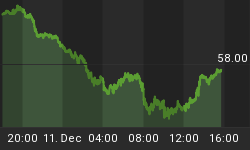The following is excerpted from a commentary originally posted at www.speculative-investor.com on 16th May 2013.
The US government usually admits to "price inflation" of about 2%/year. As far as we can tell, the actual rate is probably at least 5%/year, but no more than 7%/year. Let's say 5%/year for the sake of argument. Considering what the Fed has been doing on the monetary front, 5%/year still seems low. It's certainly a long way from the hyperinflation that some gold and commodity bulls expected to happen by now due to the Fed's profligacy. Why?
In previous commentaries we've discussed the apparent discrepancy between what has been happening to the money supply and what has been happening to "price inflation". We don't want to go back over this ground in today's report, other than to note the following: First, there is plenty of "price inflation" if you know where to look for it. The new all-time nominal price high for the US stock market and the surging demand for junk bonds are two examples. Second, monetary inflation's effects on prices are always non-uniform and can encompass large and variable time lags, making the exact price response impossible to predict and difficult to correctly interpret.
In today's report we want to make the additional point that the central bank's historical effect on the "general price level" is much greater than most people realise, for a reason that never occurs to most people: the natural tendency in a market economy is for prices to trend downward over time.
Most people have been conditioned to believe that rising prices are the natural way of things and that a strengthening economy leads to higher prices. The opposite is actually true. Real economic growth involves producing more via greater productivity and/or population. If more is produced within an economy and the money supply remains constant, then the so-called "general price level" will have a downward bias. In other words, if the supply of money is stable then the increasing production of goods and services will lead to lower prices for most goods and services. The purchasing power of money will increase over time.
An implication of the above is that to bring about a rising trend in consumer and producer prices the central bank must first engineer sufficient monetary inflation to counter the natural downward trend in prices. In the US, for example, increases in production due to productivity improvements and population growth would probably result in an average rate of decline in the "general price level" of about 3%/year, so if prices are rising at 5%/year it effectively means that monetary inflation is adding about 8%/year to the price of the average good/service. It actually isn't that straightforward, but the general point is valid.
If you are having trouble imagining the combination of falling prices and strong growth, just take a look at the computer industry. In this industry the rate of real growth has been so rapid up until now that even the Bernankes of the world have been unable to prevent prices from falling.
We aren't offering a free trial subscription at this time, but free samples of our work (excerpts from our regular commentaries) can be viewed at: http://www.speculative-investor.com/new/freesamples.html
















